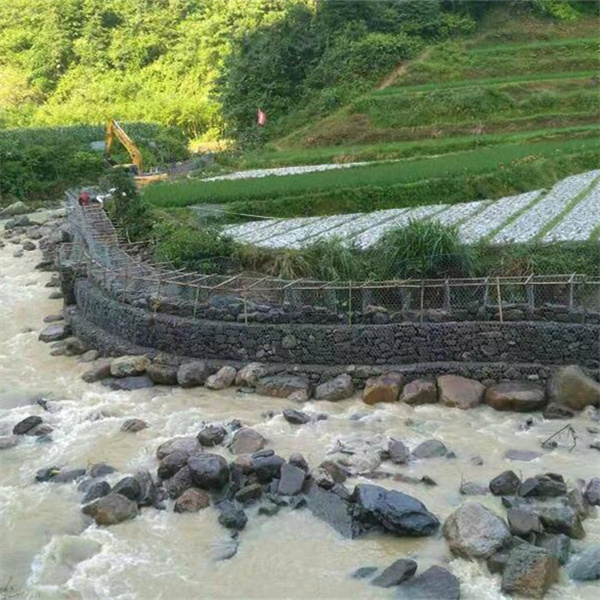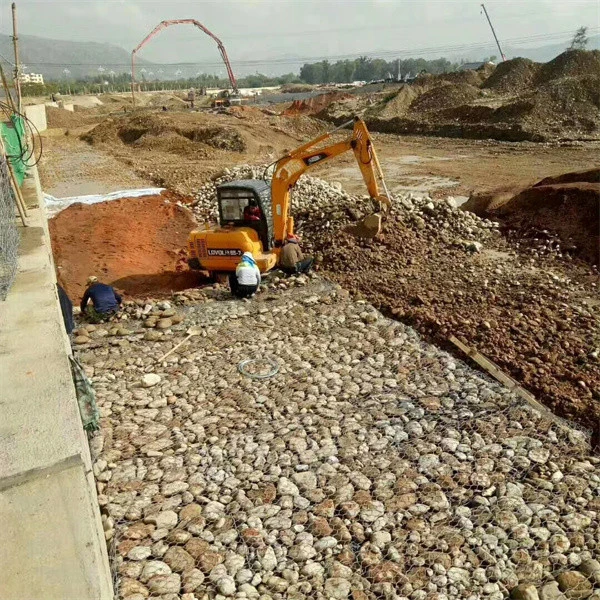កុម្ភៈ . 11, 2025 05:28 Back to list
gabion wall slope factories
Gabion wall cladding is a transformative architectural solution that combines aesthetic appeal with functional integrity. This innovative approach leverages the structured beauty of gabion baskets, filled with stones or other materials, to create striking and durable exterior façades. For those in the construction and landscaping industries, understanding the intricacies of gabion wall cladding and mastering its application is critical to delivering projects that are not only visually impressive but also environmentally and structurally sound.
An important consideration in the implementation of gabion wall cladding is drainage. Unlike traditional solid wall cladding solutions, gabions allow water to pass through, preventing water buildup and reducing potential structural damage. Installing a proper drainage layer behind the cladding ensures that water is effectively channeled away, preserving both the gabion and the underlying structure. This characteristic makes gabion cladding an ideal solution for regions with significant rainfall. In terms of aesthetics, gabion wall cladding offers unparalleled versatility. Designers have the liberty to experiment with different types of stones or other filling materials, enabling them to produce unique patterns and textures. Furthermore, the natural coloration of the stones can be utilized to blend a building seamlessly into its landscape or to stand out as a bold architectural statement. Over time, gabion wall cladding may support vegetation growth, which can integrate a building more deeply into its natural surroundings. Professionals interested in gabion cladding must also consider maintenance practices to retain the cladding’s structural and aesthetic properties. Although gabion walls are inherently low maintenance due to their sturdy construction and material choices, periodic inspections are recommended. These inspections should focus on the integrity of the baskets, looking for any signs of corrosion or damage, especially in environments exposed to salt or industrial pollutants. Addressing any issues promptly will ensure that the gabion cladding continues to perform effectively and retains its visual appeal. To conclude, gabion wall cladding represents a dynamic blend of form and function, offering sustainable, beautiful, and resilient architectural solutions. Its implementation, while relatively straightforward, requires attention to detail in both design and execution to optimize performance. For architects, builders, and developers aiming to integrate cutting-edge, environmentally responsible designs, mastering gabion wall cladding is an essential component of their professional skill set. This approach not only meets the aesthetic and functional demands of modern architecture but also aligns with global sustainability trends, enhancing the long-term viability and appeal of their projects.


An important consideration in the implementation of gabion wall cladding is drainage. Unlike traditional solid wall cladding solutions, gabions allow water to pass through, preventing water buildup and reducing potential structural damage. Installing a proper drainage layer behind the cladding ensures that water is effectively channeled away, preserving both the gabion and the underlying structure. This characteristic makes gabion cladding an ideal solution for regions with significant rainfall. In terms of aesthetics, gabion wall cladding offers unparalleled versatility. Designers have the liberty to experiment with different types of stones or other filling materials, enabling them to produce unique patterns and textures. Furthermore, the natural coloration of the stones can be utilized to blend a building seamlessly into its landscape or to stand out as a bold architectural statement. Over time, gabion wall cladding may support vegetation growth, which can integrate a building more deeply into its natural surroundings. Professionals interested in gabion cladding must also consider maintenance practices to retain the cladding’s structural and aesthetic properties. Although gabion walls are inherently low maintenance due to their sturdy construction and material choices, periodic inspections are recommended. These inspections should focus on the integrity of the baskets, looking for any signs of corrosion or damage, especially in environments exposed to salt or industrial pollutants. Addressing any issues promptly will ensure that the gabion cladding continues to perform effectively and retains its visual appeal. To conclude, gabion wall cladding represents a dynamic blend of form and function, offering sustainable, beautiful, and resilient architectural solutions. Its implementation, while relatively straightforward, requires attention to detail in both design and execution to optimize performance. For architects, builders, and developers aiming to integrate cutting-edge, environmentally responsible designs, mastering gabion wall cladding is an essential component of their professional skill set. This approach not only meets the aesthetic and functional demands of modern architecture but also aligns with global sustainability trends, enhancing the long-term viability and appeal of their projects.
Latest news
-
Wire Mesh Thickness Impact on Gabion Wall Load Bearing
NewsAug.12,2025
-
Ultimate Guide to Hexagonal Gabion Box
NewsAug.12,2025
-
Types of Rocks for Gabion Baskets Durability and Aesthetics
NewsAug.12,2025
-
Standard Gabion Box Sizes and Their Industrial Applications
NewsAug.12,2025
-
Easy Guide to Building Garden Gabion Cages at Home
NewsAug.12,2025
-
Drainage Solutions for Gabion Mesh Structures
NewsAug.12,2025
-
Visualizing Gabion 3D Integration in Urban Landscapes with Rendering
NewsJul.23,2025
Manufacturer of Silk Screen Products
QuanhuaProvide high-quality products and services to global customers.






